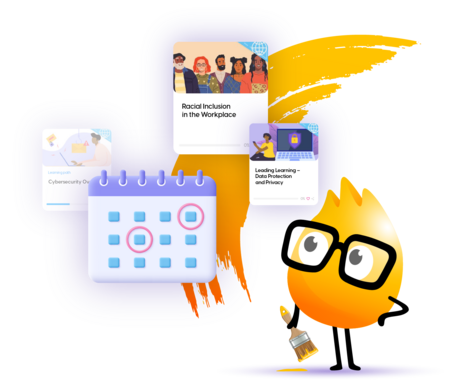Are Sales Training and Sales Enablement the Same Thing?
The terms “sales training” and “sales enablement” are often used interchangeably. They are not, however, the same thing.
While both training and enablement offer knowledge and support to the members of a sales team, each serves its own purpose when it comes to meeting the needs of both individual salespeople as well as the organization as a whole.
What is sales training?
Sales training is exactly what it sounds like. It is the learning provided to sales people so that they understand specific skills. Traditional seminars and courses fall into this category, as do product training, skills training, and onboarding for new representatives.
The goal of sales training is usually fairly simple: increase revenue for a company. This means salespeople need to be taught about new products, new salespeople need to be taught enough about the company to hit the ground running, and when a new sales tool is introduced, the sales team must be taught to use it.
Training can be served in a variety of ways: in person, virtually, and on mobile devices. Sales teams might go to a week-long conference for training, might learn in the flow of work, or they might take microlearning on their phones.
Sometimes, however, training may not be enough to help a sales team. For example, the Rain Group finds that sales training is most effective for top sellers. While the sales team’s stars are 71% more likely to benefit from sales training, they’re ironically also the ones who wouldn’t necessarily need training to perform well, compared to their less-successful colleagues.
This is where sales enablement comes in.
What is sales enablement?
Sales enablement is the process of providing the tools, learning, content, and technology that sales professionals need to be more effective at selling.
The basics of enablement have been around for a long time, but sales enablement has only become widely adopted in the past decade. According to a recent report, 80% of organizations have had their sales enablement teams in place for over two years, while 20% have had enablement in place for fewer than two years. Many of those organizations don’t have a formal enablement in place; however, 35% have an informal sales enablement vision and 9% use sales enablement for one-off projects.
In whatever way it’s being implemented, sales enablement is an umbrella term that covers a wide range of tools, techniques, and practices. For example, enablement can include:
- Sales content
- Email templates
- Customer relationship management (CRM) software
- Battle cards
- Playbooks
- Coaching
- Training
The above is not an exhaustive list; anything a sales organization needs to meet the needs of sales reps can be considered enablement. Training is one part of an enablement strategy, and often learning and development (L&D) evolves into enablement.
This was the case with Kelli MacIver, an L&D leader who found she was developing a sales enablement strategy rather than simply designing sales training. Writing for ATD, MacIver told the story of how her L&D program began to shift when reps needed more support with the sales process.
“Feeling boxed in by the words ‘learning and development,’ I decided not to allow my title to limit how I could help my organization,” she writes. “After this shift in perspective, I spent more time working with the sales team directly, looking to solve their biggest issues and drive productivity.”
Sales enablement has risen to prominence lately because sellers have been under more stress. The pandemic changed the sales landscape, pushing more sales to virtual channels. A recent survey found that salespeople aren’t yet comfortable with virtual selling; 40% lack knowledge and 29% lack training when it comes to building trust with clients virtually.
Sales reps are also likely to lose the knowledge and skills they learned in the one-time training sessions that kick off a product launch. According to a Gartner survey, B2B sales reps forget 70% of the information that they learn within a week of training. Enablement can help with retention by providing a variety of on-message support for sales reps.
What’s the difference between sales training and sales enablement?
The biggest difference between the two is that enablement is a strategy. Training is a part of that strategy.
The focus of enablement also differs from sales training. Enablement covers the needs of the entire organization as well as the needs of individual salespeople who are struggling. If a team needs to increase revenue, the enablement team might create content about the sales process for them, as well as use coaching to help improve sales. Conversely, if a company is trying to improve customer experience, different tools may be used, like customer experience training.
Both enablement and training have their place in a successful sales organization. Both support the sales team and help achieve revenue goals. To be effective, it’s important to provide both to your reps.




